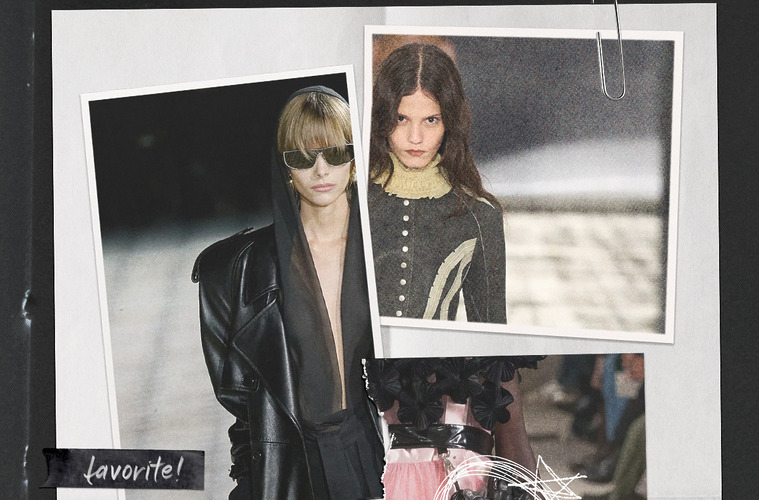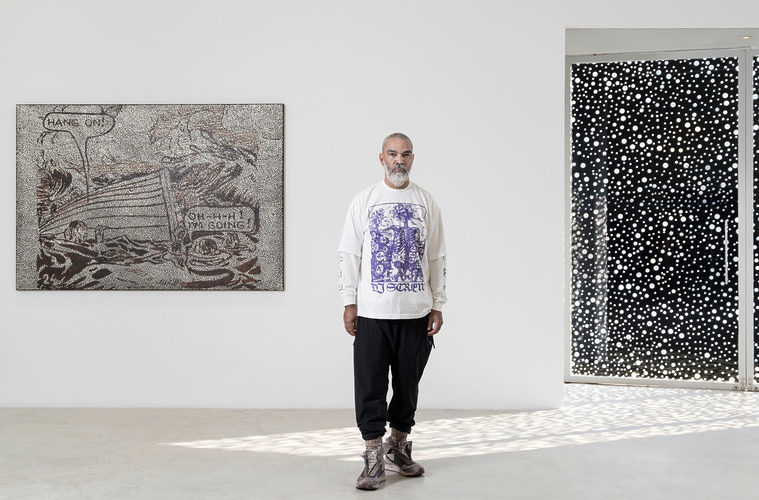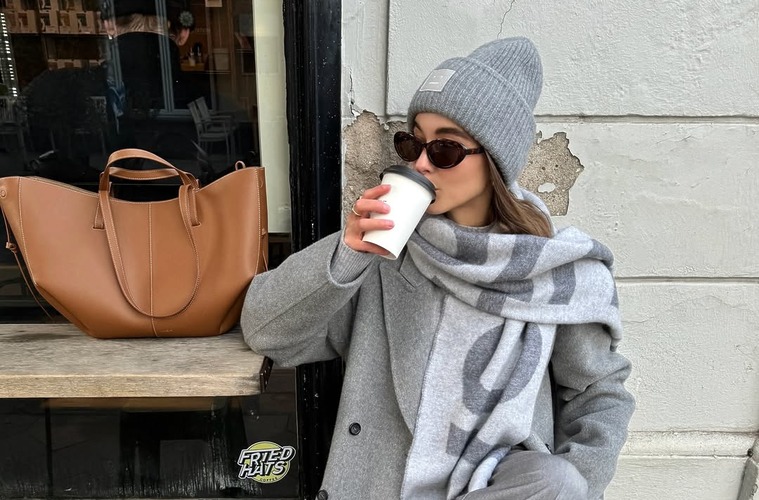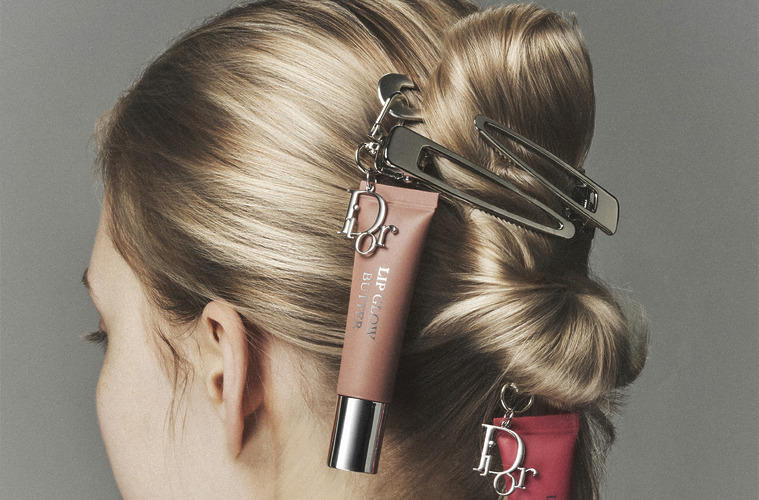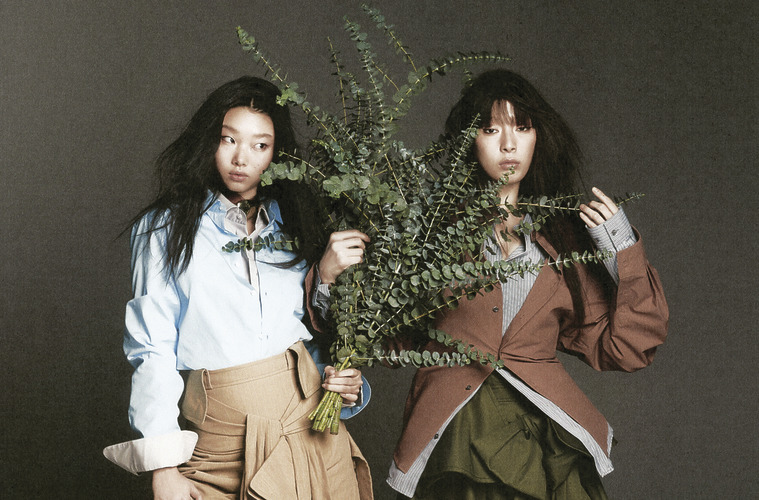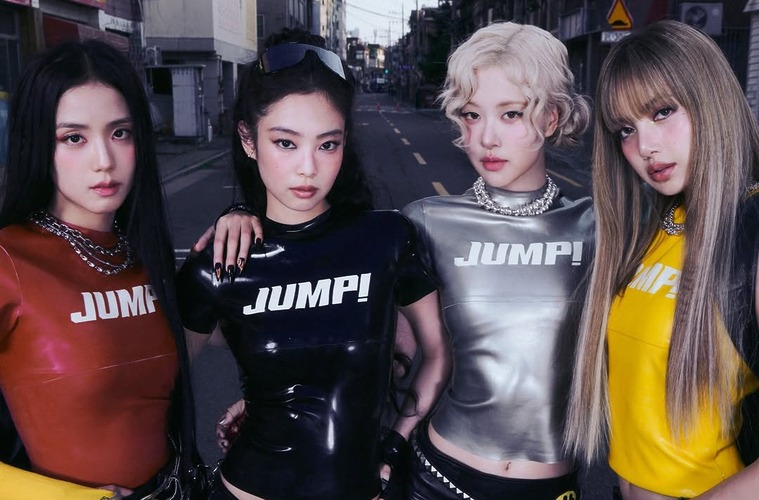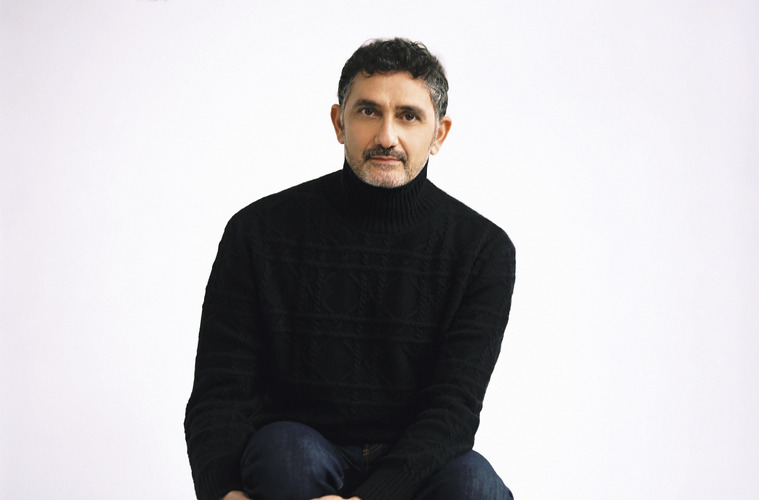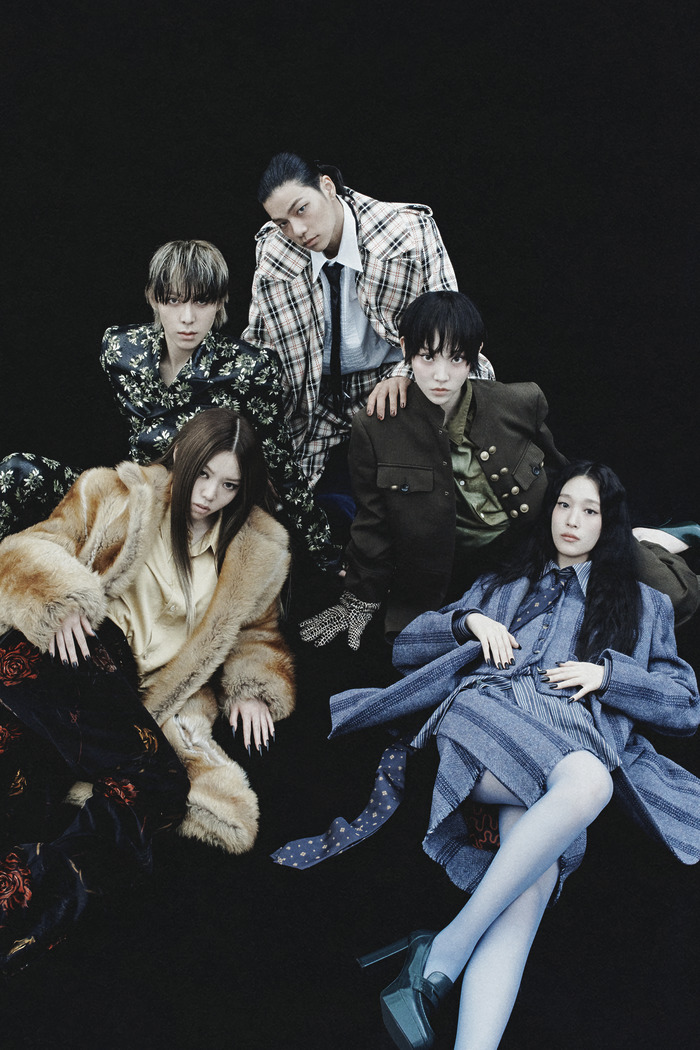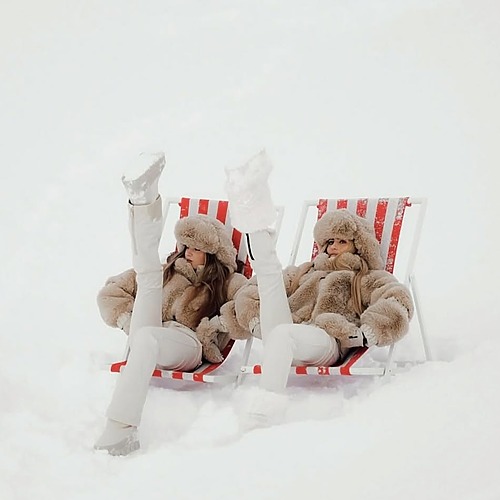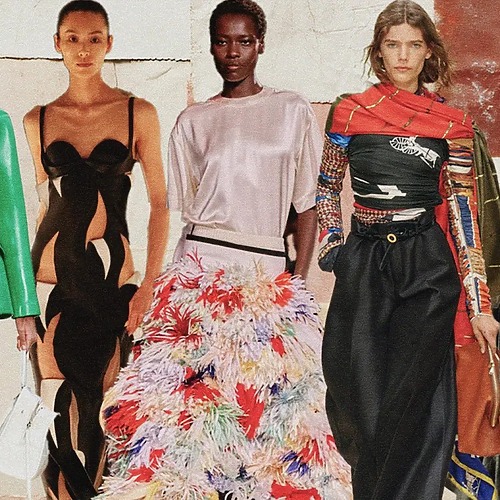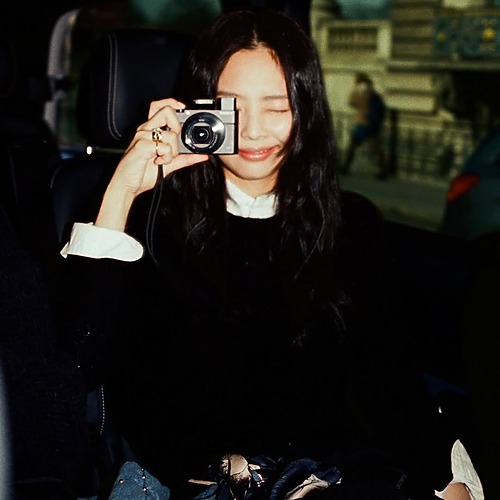율리아나 세르젠코, 다이스 카약, 이칭 인, 그리고 너무나 이국적인 패션 전시회
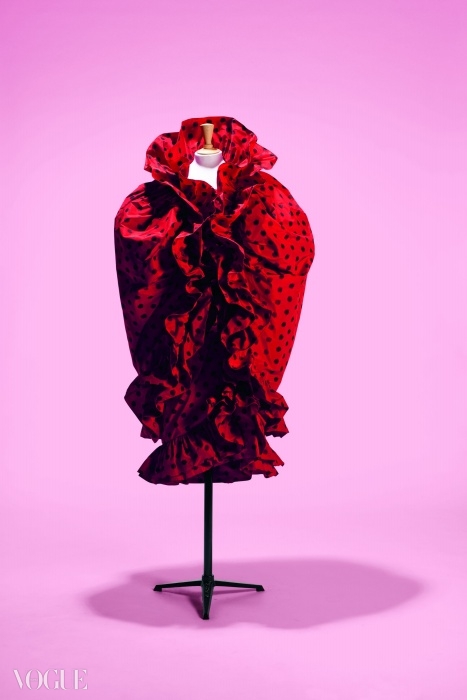
8년 전 이민의 역사를 다루는 박물관이 파리에 문을 열었을 때, 아무도 이 주제가 좀더 유의미하고 논쟁적으로 변할 줄은 예측하지 못했다.
최근 이슬람 근본주의자들이 파리를 공격한 사건이 발생한 후 얼마 지나지 않아 나는 제 12구에 위치한, 그 이름도 적절하게 “포르트 도레(Porte Doree)”, 즉 황금의 문이라 이름 붙여진 이민역사박물관에 도착했다 프랑스의 정체성과 경제적, 사회적, 그리고 문화적 다양성에 대한 이 민감한 주제로 패션이 어떤 역할을 할 수 있을까?

그러나 패션믹스(Fashion Mix) 전시장에 들어서자마자, 나는 한 세계전도에 압도되어 발길을 멈췄다. 그 지도에는 여러 디자이너들의 궤적이 프랑스 바깥에서부터 화살표로 표시되어 있었다. 크리스토발 발렌시아가, 엘사 스키아파렐리, 그리고 찰스 프레드릭 워스 같은 과거의 인물들부터 아제딘 알라이아, 알렉산더 맥퀸, 그리고 준야 와타나베 같은 컨템포러리 디자이너들까지 모두 그곳에 있었다.
팔레 갈리에라(Palais Galliera) 의상장식박물관 디렉터인 올리비에 사이야르(Olivier Saillard)가 큐레이팅을 맡은 이번 전시는 존 갈리아노나 비비안 웨스트우드의 작품들을 20세기 루실 드레스 곁에 함께 놓아 그 주제를 살렸다. 유명 디자이너들에 대한 자료들, 편지들, 스케치들과 정보는 앞쪽 작은 전시장에 마련됐다. 이번 쇼는 패션을 기록화하는 훌륭한 방법이 되었다.
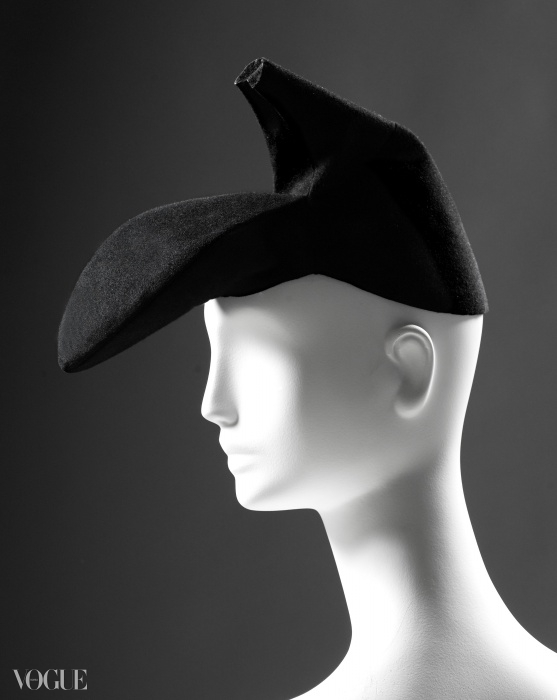
올리비에 사이야르는 일본이나 러시아와 같이 출신국가에 따라 패션’이민자’들을 구분했다. 이러한 구분에 완전히 동의하기는 어려웠다. 물론 모국을 떠나 파리에 자리를 잡고 종종 프랑스식으로 이름까지 바꾸는 디자이너들 – 이를 테면 이집트 출신 장 데쎄(Jean Dessès) – 그리고 파리에서 활동은 하지만 살지는 않는 꼼므 데 가르송의 레이 카와쿠보 같은 디자이너들 간에는 구분이 이뤄졌어야 했다.

마찬가지로, 1920년대에 나타난 러시아인 집단 중에는 혁명을 피해 도망 나온 귀족 출신으로 생계를 유지하기 위해 재봉기술을 써야 했던 디자이너들도 있다. 이들은 패션 신성화 구역을 찾아 파리에 온 디자이너들과는 차별되는 진정한 이민자들이었다.
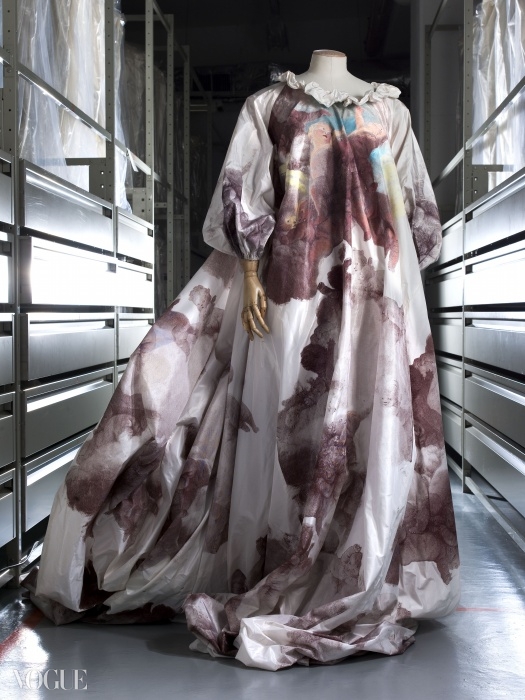
그러나 이 전시는 쉽고 경제적인 비행이 불가능하던 시대엔 여행이 얼마나 힘겨운 일인가를 보여주는 감동적인 이야기들도 다루고 있다. 전시회에서 상영되는 비디오 인터뷰에서는 요지 야마모토가 일본에서 출발해 시베리아와 핀란드, 덴마크를 거쳐 마침내 그가 “고향에 돌아온 듯 했다”라고 표현한 파리에 도착하게 되는 기차여행에 대해 이야기를 하고 있었다.
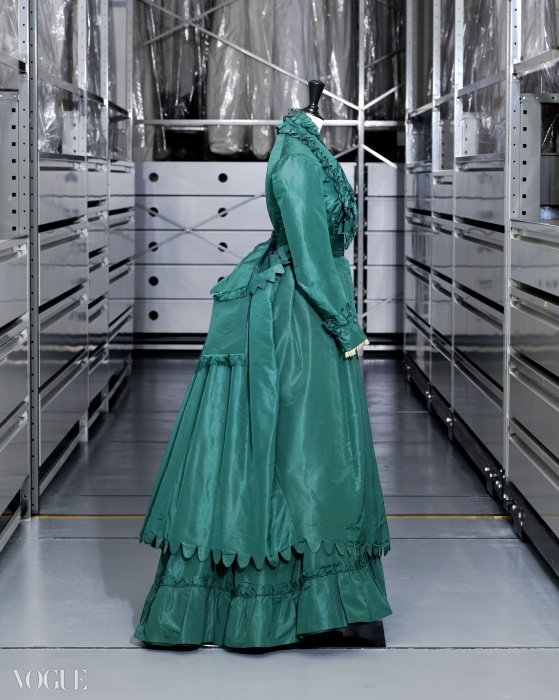
그리고 실제로, 이번 쿠튀르 써머 시즌에서 프랑스가 아닌 다른 국가 출신 디자이너들을 여럿 목격할 수 있었다. 다음이 바로 오늘날의 ‘패션 믹스’에서 만나볼 수 있는 디자이너들이다.
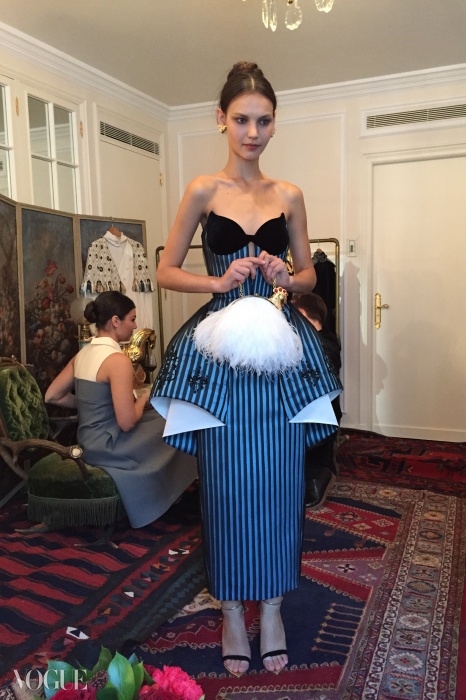
율리아나 세르젠코는 마치 러시아 동화 같다. 율리아나 세르젠토는 민속문화와 전통의상을 잘 배합해 강렬한 의상들로 둔갑시켰다. 이번 시즌 그녀는 시아버지의 코카서스 혈통에서 영감을 얻어 그루지야와 아르메니아에 포커스를 둔 컬렉션을 선보였다.
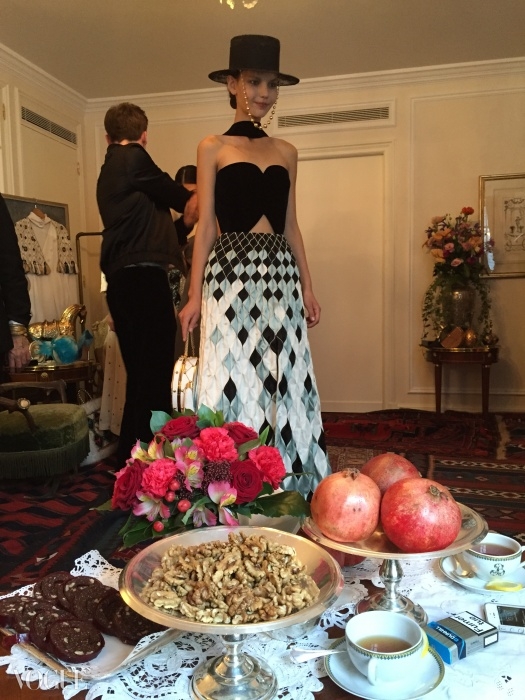
이 디자이너는 심플한 형태에 시적인 장식을 한 의상을 통해 이야기를 들려준다. 나는 플리츠와 손바느질로 완성된 다이아몬드 패턴, 또한 볼드 스트라이프 위에 그려진 가느다란 꽃잎 자수도 손으로 쓰다듬어 보았다. 어떤 의상은 그루지야 서체를 활용했는데, 율리아나의 작품에는 언젠가 사라질지도 모르는 기술과 전통을 지키려는 그녀의 의미가 담겨있다.

닭의 모양을 한 털북숭이 가방, 그리고 모자 디자이너 스테판 존스와 콜라보레이션한 로맨틱한 모자가 여기에 더해지면서, 율리아나의 컬렉션은 역사수업이 아닌 미학적 비전이란 걸 보여준다.
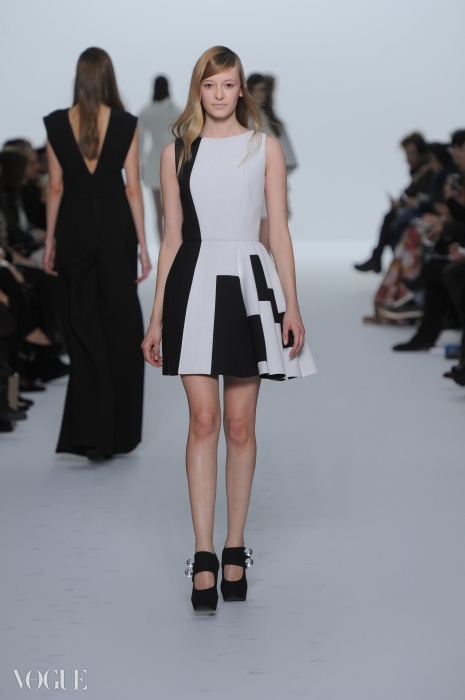
런던의 빅토리아 앤 알버트 미술관은 2013년 프랑스 브랜드인 다이스 카약을 이끄는 터키 출신 에제와 아이셰 에게(Ece Ege, Ayşe Ege) 자매를, 이슬람 전통에서 영감을 얻은 컨템포러리 디자인에 수여하는 자밀상(Jameel Prize) 수상자로 선정했다.
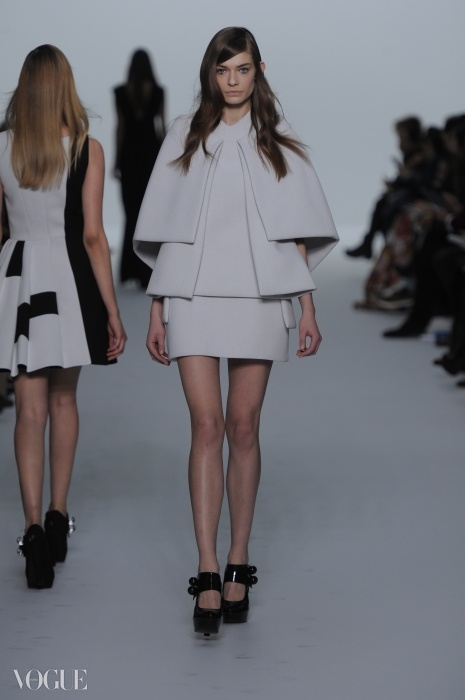
그러나 이들의 써머 쿠튀르 컬렉션이 이슬람 타일 패턴이라던지 히잡이라는 논쟁적인 주제를 반복적으로 사용할거라는 예상은 모두 틀렸다.
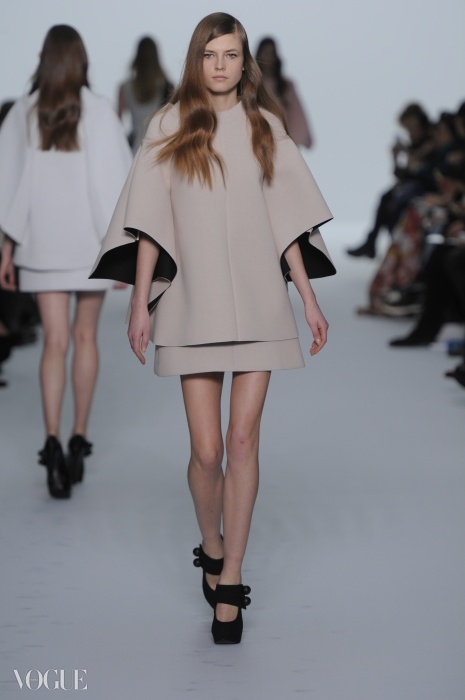
다이스 카약은 인형에서 영감을 가져왔다. 그러나 사랑스럽고 아이 같은 느낌이 아닌 한스 벨머(Hans Bellmer)나 루이즈 브루주아(Louise Bourgeois)와 같은 예술적인 창착품에 가까웠다. 그 결과, 종종 예술작품에서 만나게 되는 인형에 대한 페티쉬적인 관점과는 거리가 먼, 기하학적인 패턴 위로 수학적인 비전을 담은 의상이 탄생했다.
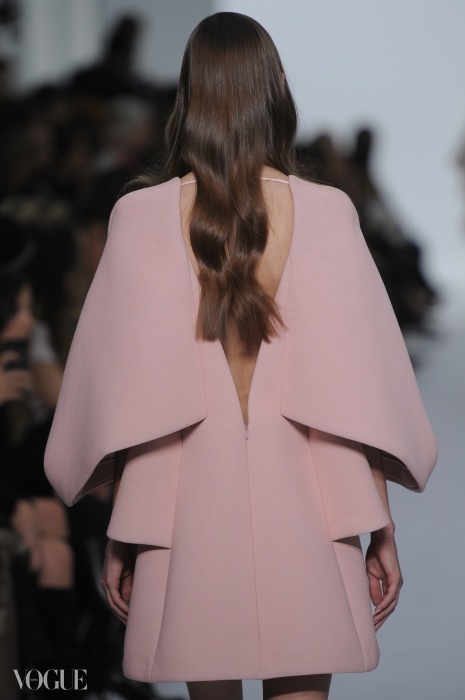
런웨이에 몸의 굴곡을 따라 조각된 드레스가 등장했고, 플루트 모양을 한 소매나 어깨부터 개더드 케이프를 두른 듯 떨어지는 소매도 있었다. 붉은 색과 푸른 색, 검은 색과 흰색이 또렷한 대칭을 이룬 그래픽 라인들이 그려지기도 했다.
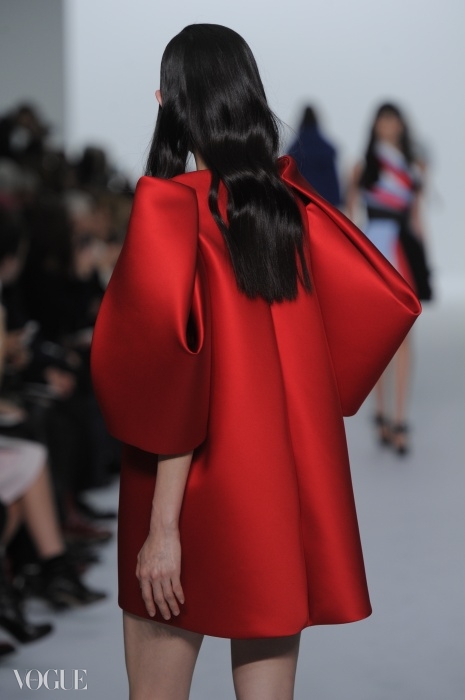
프로그램 노트는 다이스 카약에 대해 “멀티 컬러의 실크가 만들어낸 밀푀유 같은 팽이 드레스들”이라고 시적으로 표현했다. 이는 어쩌면 인형의 옷장에 대한 묘사처럼 들리기도 하지만, 이번 컬렉션은 현실의 여성들을 위해 현대적이고 모던했다.

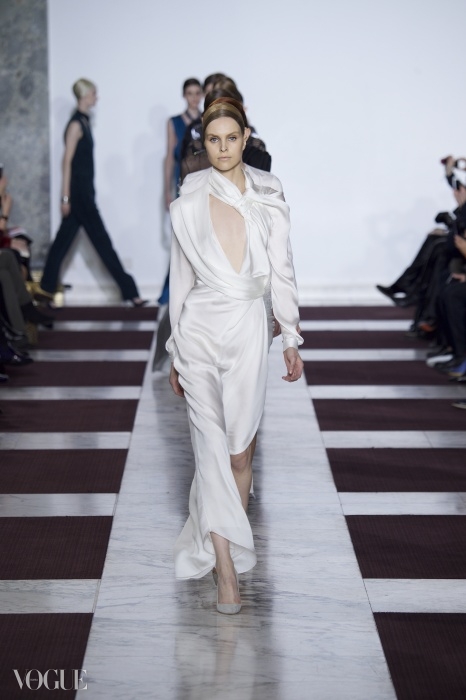
이칭 인은 그녀 나이 4세에 가족들과 함께 모국인 중국을 떠나, 문화를 이해하려 노력해야 했던 파리에서 살고 있다는 점을 떠올려보면, 그녀가 돌연변이에 매료되어 있다는 건 놀라운 일이 아니다.
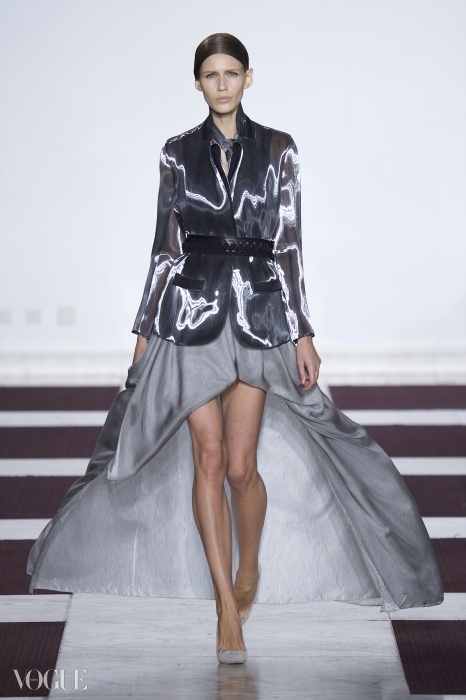
나는 금방이라도 부서질듯한 모습의 패브릭과 동물, 식물들이 완전히 다른 존재로 변하는 그녀의 컬렉션들을 모두 봐왔다. 그러나 이번 시즌, 이 디자이너는 그녀의 말마따나 자신만의 “꿈 같은 세계”를 탐구한 후 “한 걸음 물러선” 모습을 보여주고 있다.
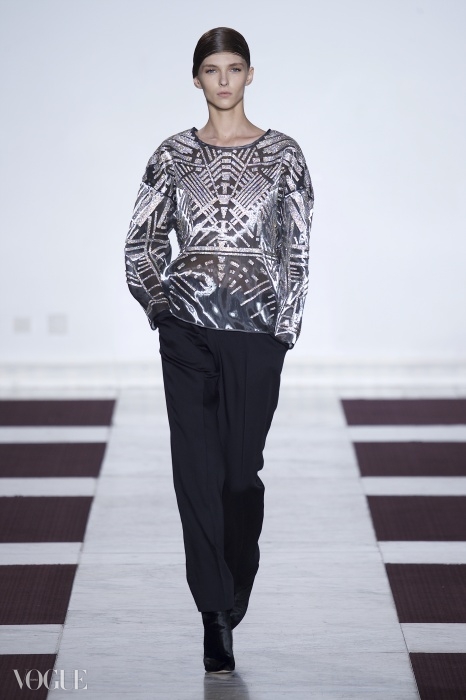
몸의 곡선에 포커스를 두되 언제나처럼 토르소와 의상 사이에 공간을 남겨놓은 이칭 인은, 프랑스인이 되기 위함이었던 훈련과 아시아인으로서의 유산 사이에서 균형을 잃지 않은 하모니가 발목과 곡선을 따라 흐르는 우아한 컬렉션을 선보였다.

English Ver.
Suzy Menkes: Fashion Mix – The Immigration Game
Ulyana Sergeenko, Dice Kayak, Yiqing Yin, and a Very Topical Fashion Exhibition
When a Paris museum dedicated to the history of immigration opened eight years ago, no one could have predicted the ways in which its subject would become more relevant and more contentious.
Not long after the recent extremist attacks in Paris, I arrived at the Museum of the History of Immigration, at the aptly named Porte Dorée, or Golden Gate, in the 12th arrondissement. What could fashion have to do with this touchy subject of French identity and its economic, social and cultural diversity?
But as soon as I walked into the exhibition, Fashion Mix, I was transfixed by a map of the world. It was traced with arrow-strait lines that showed the trajectory of a mass of designers from outside of France – some famous from the past such as Cristobal Balenciaga, Elsa Schiaparelli and Charles Frederick Worth, others more recent or contemporary, from Azzedine Alaïa through to Alexander McQueen and Junya Watanabe.
The exhibition, curated by Olivier Saillard, director of the Palais Galliera, lives up to its title, placing the grand gestures of John Galliano or Vivienne Westwood beside a Lucile dress from the Twenties. Details, letters, drawings and information about the best-known designers are given in a mini-cabinet at the front. The show is a great way of documenting fashion.
Olivier Saillard divides these fashion ‘immigrants’ into different countries of origin, such as Japan or Russia, although I was not entirely comfortable with the groupings. Surely a distinction should have been made between designers who left their home countries and settled in Paris, frequently ‘Frenchifying’ their names, such as the Egyptian Jean Dessès, and those many designers, such as Rei Kawakubo of Comme des Garçons, who show in Paris but do not live there.
Equally, the Russian contingent which appeared in the 1920s included designers who were often aristocrats fleeing the revolution, and who used their sewing skills to keep afloat. These were genuine immigrants, rather than designers looking for fashion-world consecration in Paris.
Yet the exhibition includes some touching stories that show how challenging it could be to travel in the early days, before the availability of easy and affordable flights. In a video interview displayed in the show, Yohji Yamamoto talks about his train journey from Japan, via Siberia, through Finland and Denmark and finally to Paris, where he said he “felt I had come home.”
For fashion lovers, the exhibition is interesting in that it shows even recent designers, like Helmut Lang, who are now part of history. And even though Saillard hardly mentions the inflammatory ‘immigration’ word, we get the message: the Paris stew of high style does not have purely French ingredients.
And, indeed, this summer couture season has witnessed collections from designers whose origins are not French. Here are some of the ones included in the current fashion mix.
Ulyana Sergeenko: Georgia on Her Mind
Everything about Ulyana Sergeenko seems like a Russian fairy tale. She manages to blend folklore and costume, while transforming them into compelling clothes. This season, the focus of her collection was Georgia and Armenia, inspired by the Caucasus background of her husband’s father.
This designer’s skill is to tell tales through clothes that are simple in shape but poetic in decoration. I ran my hand over diamond patterns created with pleats and hand stitching; or embroidery of spidery flowers over bold stripes. Some pieces used Georgian calligraphy, and there is a sense in Ulyana’s work that she is preserving techniques and traditions that might otherwise be lost.
Add furry bags in the shape of chickens, and romantic hats in collaboration with milliner Stephen Jones, and it shows that this is not a history lesson but an aesthetic vision.
Dice Kayak: Dollhouse Visions
London’s Victoria and Albert Museum gave the 2013 Jameel Prize for contemporary design inspired by Islamic traditions to Turkish sisters Ece and Ayşe Ege, who make up the Paris-based label Dice Kayak.
But anyone thinking that their summer couture collection would be about Islamic tile patterns, or a riff on the contentious subject of headscarves, would be wrong.
The Dice Kayek inspiration was dolls – not the sweet childish type – more the artistic creations of Hans Bellmer or Louise Bourgeois. The result was not so much the fetishist’s view of dolls, often expressed in art, but rather a mathematical vision of clothes drawn on a geometric pattern.
On the runway, the vision was of sculpted dresses that followed the body’s curves; others had flute-shaped sleeves or gathered cape-like effects from the shoulders; while some graphic lines juxtaposed bright shades of red and blue, black and white.
The programme notes described this, poetically, as “spinning-top dresses with mille-feuille, multi-coloured silk.” This makes it sound more like a doll’s wardrobe. But the collection seemed streamlined and modern for real women.
Yiqing Yin: Reality Check
Having fled with her family at age four from her native China, then living in France in a culture she had to learn to understand, it is not surprising that Yiqing Yin has been fascinated by mutation.
I have seen her collections when fabrics, animal or vegetable, all seemed to have a fragile existence, before they morphed into different entities.
But this season, the designer, in her own words, “made a step aside”, after having explored her “dream-like world”.
Focusing on the body shape, but always seeming to leave space between torso and clothes, Yiqing Yin sent out a graceful collection, tracing angles and curves with the harmony that does justice to her French training – and her Asian heritage.
인스타그램 @suzymenkesvogue
트위터 @SuzyMenkesVogue
페이스북 facebook.com/suzymenkes
- 에디터
- 보그 인터내셔널 에디터 / 수지 멘키스(Suzy Menkes)
- 사진
- Courtesy Photos
추천기사
-

패션 트렌드
당신의 추구미와 도달미는 무엇입니까?
2025.12.29by 황혜원, 한다혜
-

아트
넘실거리는 점은 네가 되었다가, 바다가 되었다가, 우리가 된다
2025.12.19by 하솔휘
-

패션 아이템
요즘 옷 잘 입는 사람들은 조용하지만 분명한 그레이를 입어요
2025.12.23by 소피아
-

뷰티 화보
2026년 '보그' 뷰티가 뒷모습에 감춰둔 상징적 아이템 8
2026.01.02by 신서영
-

셀러브리티 스타일
다이애나 왕세자비의 가장 근사한 크리스마스 패션 11
2025.12.24by 김현유, Emily Chan
-

패션 트렌드
올해 구글에서 가장 많이 검색한 빈티지 아이템
2025.12.29by 하솔휘
인기기사
지금 인기 있는 뷰티 기사
PEOPLE NOW
지금, 보그가 주목하는 인물


